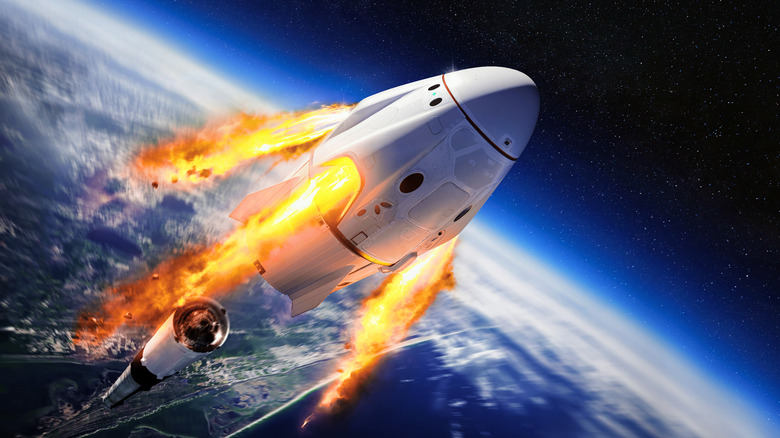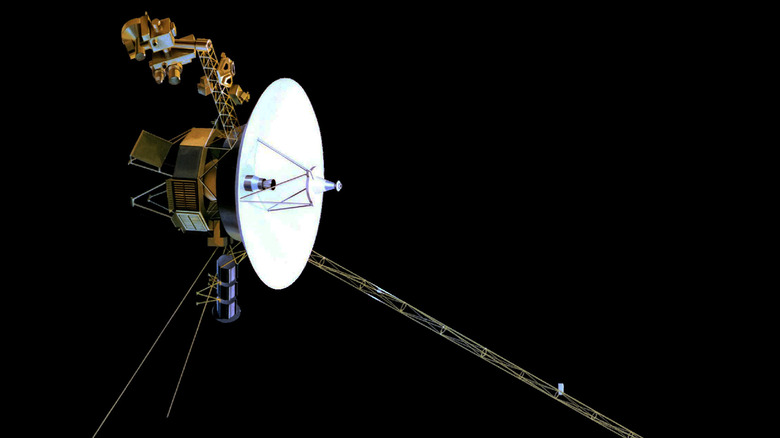What Does Space Sound Like?
Humans have been going into space since the 1960s, and in the decades since, have sent spacecraft outside the boundaries of our solar system. Though we've been studying space for decades, we have only begun to scratch the surface when it comes to unlocking the mysteries held up there.
One thing that has always been clear, however, is that space is as silent as the grave. As Cool Cosmos reports, sound waves require something — such as air molecules — to vibrate in order to propagate. Since there's no air in space, there's no sound.
Except that's not the entire story. There is air in space, of a sort, in the form of interstellar gas that's ejected from stars and floating around through the universe. And scientific instruments have picked it up, and you can now hear for yourself what space sounds like. As it turns out, space sounds not much unlike static punctuated by the occasional high-pitched whistle.
The Voyager 1 craft caught space sounds
In 2012, according to CNET, the Voyager 1 spacecraft passed through the boundary of the heliosphere — that is, the range of the sun's orbit — and into interstellar space, where it will remain until the heat death of the universe or until it is caught by another object's gravity.
Over two separate periods of time, once between October and November 2012, and again between April and May 2013, the craft's plasma wave instrument caught two bursts of interstellar gas through which it passed. As Deseret News reports, NASA released a portion of the craft's data in a YouTube video. Listening to the video, you will hear background static punctuated by two bursts of whistles.
It bears noting that the sound in the YouTube video did not occur in real time, but rather, each occurred over the course of weeks as the craft passed through hundreds of millions of miles of ionized gas.
"We're detecting the faint, persistent hum of interstellar gas. It's very faint and monotone, because it is in a narrow frequency bandwidth," noted a scientist.

